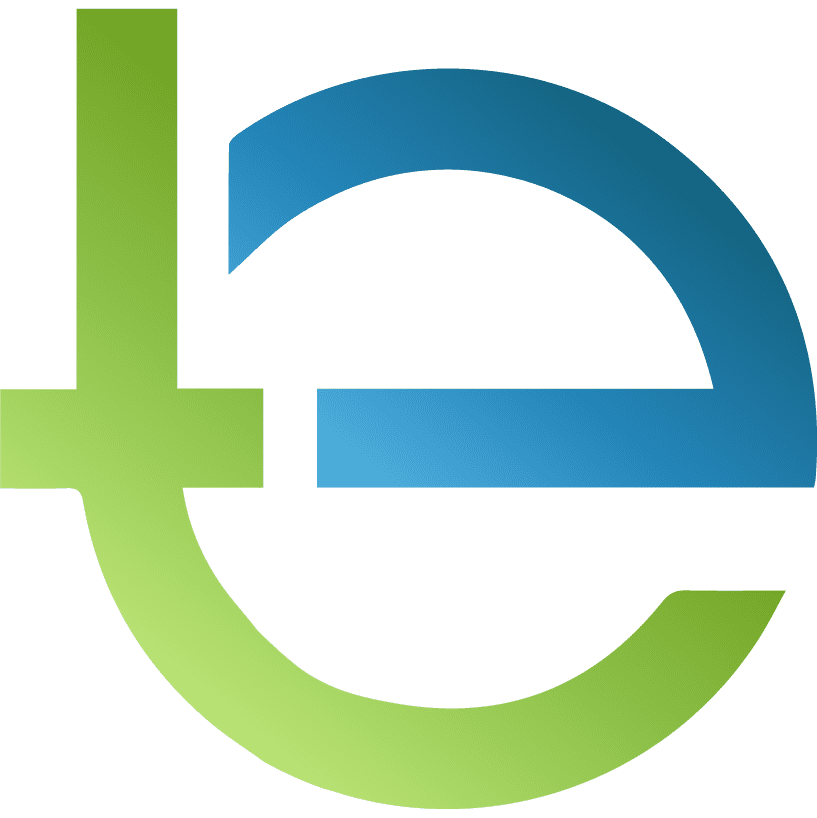Views: 41
Name
School of Nursing and Health Science, Capella University
NHS-FPX8040
Dr Paula Stechschulte
September, 2024
| Part 2 | ||||||
| Project Team | ||||||
| Title | Department | Role | ||||
| Executive Sponsor | Chief Nursing Officer (CNO) | Nursing Administration | The Chief Nursing Officer oversees all nursing operations and is responsible for the quality of care sent to the patients, thereby ensuring the nursing service helps achieve the organization’s goals.The Chief Nursing Officer is selected as the executive sponsor due to key positioning in addressing the gap identified in the fulfillment of hand hygiene compliance, as described in Part 1 of the Project Charter. Executive-level accountability for the success or failure of nursing initiatives is fundamental, particularly with strategies aimed at improving patient outcomes. The CNO will greatly back access to resources like training and the development of new protocols. Therefore, our first goal of improving hand hygiene compliance is likely to increase by 25% within six months.The CNO is also well-equipped to deal with any resistance or challenge that may arise while executing the project. Their power to command the respect of the nursing staff and other stakeholders at the workplace will ensure that everyone is in line with the project’s goals. Leadership from the CNO provides the perfect environment for success by encouraging a culture of safety and continuous improvement. Consequently, it will support the effective implementation of quality improvement strategies to be provided in Part 1. This will be appropriate because the goal of the project is to improve standards of patient care, and this is in line with the organizational mission-ability to provide high-quality healthcare without healthcare-related infections. | |||
| Team Members | Infection Control Nurse | Infection Prevention and Control | Indeed, the Infection Control Nurse plays a critical role in the project as they use their very extensive knowledge about infection management and prevention within health care. Their scope of role includes designing, implementing, and evaluating infection control practices, but mostly focused on hand hygiene improvement. This will be achieved through proper assessment of the current practice, identification of gaps, and definition of the appropriate educational programs so that such issues can be addressed. They lead hand hygiene compliance monitoring through the schedule of audits and feedback meetings to ensure standards developed are met. The Infection Control Nurse also acts as a liaison between the project team and front-line staff, who are equipped with the necessary education and resources to create a culture of safety and compliance. Their function will be crucial in the dissemination of such evidence-based guidelines into active steps taken to safeguard more patients and decrease events of healthcare-associated infection. | |||
| Title/Department and/or Affiliation | Rationale for Selection/Contribution to the Project | |||||
| Staff Nurse | Practical experience: An immediate opportunity to have on-site experiences firsthand regarding the daily challenges of hand hygiene among healthcare providers.Implementation feedback: It guides feedback on the implementability and practicability of any proposed change.Peer influence: Can influence other employees by conducting peer-to-peer education and demonstrating best practices.On-the-ground perspective: The realities and practices on the ground make interventions possible. | |||||
| Quality Improvement Coordinator | Data analysis: It analyzes the results of projects and shows whether the interventions attained the desired outcomes.Alignment to standards: This is to conform to organizational quality improvement standards.Progress monitoring: It provides updates regularly and identifies areas that require adjustment.Resource Management: Organizing and making resources and supports that are to be available for work during the project. | |||||
| Clinical Educator | Training development: Designs and delivers training sessions on best practices for hand hygiene.Educational support: Educates and continues to provide support for staff to achieve adherence to new practices.The dispersion of knowledge: It will share best practices and guidelines based on evidence with the respective healthcare professionals.Skill reinforcement: The employees’ skills and knowledge are upgraded through systematic training sessions. | |||||
| Pharmacy Representative | This leads to medication safety and thereby the role of hand hygiene in preventing infections related to medication.The interdisciplinary team: Facilitates communication between the pharmacy and other departments.Impact assessment: It deals with how hand hygiene impacts the ways that medications are being managed as well as patient outcomes.Policy alignment: Hand hygiene policies align with medication safety policies. | |||||
| Patient Advocate | Focus on the patient: This ensures that the direction of the project is towards patients’ safety and satisfaction.Feedback collection: Considers the patient’s feedback on hand hygiene practice and its impact on careAdvocacy role: Placing the patient’s perspective in the project development and implementation process.Outcome evaluation: Helps determine the overall impact of the project on patient care and the levels of satisfaction realized. | |||||
| Team Leader | Jane Smith, Director of Quality Improvement | Jane Smith, Director of Quality Improvement, would be an excellent leader for the project. She fits well in the position because of her directorial position which offers autonomy and experience in contributing to quality improvement in infection prevention practices. Overall, the ability of Jane as a transformational leader will make her work out and motivate the team in bringing out high standards of success for the project. This is always in good inspiration for the members of a team to adopt the introduction of new practices and even improve better than before (Kelemen et al., 2019). Making high targets combined with incentives for innovative idea generation during leadership by Jane is going to play a key role in overcoming the main obstacles hindering the achievement of hand hygiene compliance improvement.Besides this transformational approach, her servant leadership style will be very instrumental in creating a facilitative environment (Kamau, 2021). She will ensure that all members are valued and involved through her active listening when hearing their plight. Building trust and commitment is usually garnered by listening to the needs of team members in the process of implementing new protocols. Letting Jane interact effectively with the team and develop an emotional intelligence level that will influence her ability to lead the team throughout the project, motivating and aligning them with all the requirements to bring out the desired outcomes. | ||||
| Stakeholders | ||||||
Title/Role or Affiliation | Connection to the Project | How Affected/Impacted by the Project? | Contribution to the Project | |||
| Dr. Emily Johnson, Chief Medical Officer | Dr. Johnson is overseeing the operational and management functions of clinical activities and patient care standards of the organization. She plays a very vital role in integrating new infection control measures into prevailing processes and ensuring that such protocols are adhered to consistently. | It is going to affect her management of clinical protocols directly and, in turn, bears an impact on patient safety and quality of care. Successful implementation will enable her to keep standards of excellence within the ‘rubric’ of infection control and, therefore general outcomes of treatment for patients. | Dr. Johnson will bring strategic oversight and ensure that the new infection control protocols match what is practiced clinically. Her leadership will ensure integration into the organization’s routine operations and uphold high-quality patient care. | |||
| Lisa Carter, Patient Advocate | This is a patient advocate by profession, Lisa Carter. She would represent the voices and concerns of the patients, who would play a quintessential role by incorporating their opinions into the project development and implementation process. | She will be affected by this project because of the work area that concerns improving infection control practices, whereby this enhances patient care and safety. The insights she will produce to help in directing the project for the best service to patients and keeping her anxiety at bay. | In this regard, Lisa will provide tremendous value to the project as she can give patients’ perspectives and feedback through which the project can be refined such that its objective to address the needs of a patient is perfectly met. Her input would ensure that any new infection control measures are patient-centered and responsive to patient concerns. | |||
| Tom Wilson, Policy Mover | Tom Wilson is working on policy development and revision within the health sector. He would be associated with this project because of its direct implications on policies and regulatory standards related to infection control. | The impact might even be reflected in the new directions adopted in policies or as part of new regulations. Tom will be affected by how well the project aligns with or challenges current policy frameworks and its potential to drive policy improvements. | Tom will review and potentially endorse outcomes from the project with results that will significantly influence change in policy while also ensuring regulatory compliance. By endorsing efforts put into these measures, he will always work to ensure them according to current policies and might create an avenue for broad policy changes. | |||
| Rachel Lee, Infection Control Specialist | Rachel Lee is well-versed in the practices of infection control. She will contribute her technical expertise to the new measures involved in the project. She will be engaged in designing and fine-tuning the protocols employed in the project. | The project will change her role by requiring her to update and oversee the execution of new infection control practices. Her contribution will be very important for ensuring effectiveness and compliance with current standards of the new practices. | Rachel will also take a leading role in the design and practical testing of innovative infection control measures technically correct and effective. Thus, she can work out the application of the said measures practically to confirm that they reach the highest standards in infection control. | |||
| Michael Gomez, Facility Manager | Michael Gomez is overseeing the day-to-day facilities. Apart from the day-to-day responsibilities, he needs to ensure that infection control is in place. He will oversee the coordination of new protocols introduced by the project. | The project will affect him as there are going to be new procedures added to the set ways of running the facilities. In managing this, he will be instrumental in the project’s success as it will ensure infection control is maintained across the facility. | Michael would monitor and coordinate new, practical implementations of the new protocols at the facility level, ensuring proper implementation and maintenance. His role would contribute a lot toward coordinating resources and facilitating the adoption measures at the operational level. | |||
| Communication Plan | ||||||
| Purpose of Communication: The purpose of communication here is to inform everybody of what the project is and to get them to become part of how to accomplish the project goals. This means presenting updates on project progress, a report on successes and failure points to an executive sponsor as appropriate, and discussing those high-level issues with them that might need their attention (Reiff, 2022). To stakeholders, it means soliciting input and listening to their concerns while being attentive to fulfilling their needs and expectations. For the team, it will be to inspire oneness, outline the way forward, and make sure everyone has a defined role and responsibility. Modes of Communication:Executive Sponsor: This will include formal and strategic interactions with the executive sponsor through regular status reports, executive summaries, and scheduled meetings that provide updates at a high level, as well as major issues or decisions. It will ensure that this sponsor is always up-to-date, thus supporting and equipping one with the required resources (Yuill et al., 2021).Stakeholders: The method of communication with the stakeholders would be formal and informal wherein there will be use of newsletters, stakeholders’ meetings, and feedback sessions. This would provide avenues for gathering input updates of actual happenings and solutions to other complaints thus ensuring stakeholder involvement and stakeholder satisfaction.Team: Team members will be serviced with frequent and detailed updates through team meetings, project management tools, and progress reports. Frequent updates and clear instructions will ensure alignment and maintain the team’s focus.Challenges and Strengths:Cultural Competence: Communicate with sensitivity, through culturally responsive messages. Recognize variances in cultural differences as far as means of communication are concerned to avoid conflict and promote an inclusive setting.Implicit Bias: Eliminate and reduce implicit bias by objective and data-driven communication to ensure that all stakeholders and members are treated impartially.Levels of Knowledge: Differ in the kind of information for the respective audience by high-level information to the executive sponsor and stakeholders, but detailed information for the teams that will require specific guidance (Grover & Niederman, 2021).Representation and Inclusion: Diversify the voices in the communication channel such that no single voice is left unheard and highly respected. It may include language and representation from all the groups concerned relative to a given situation.Diversity and Inclusive: Provide an opportunity where individuals will feel included and valued. Use inclusive language and provide an opportunity for stakeholders and members of the team so that they can participate in input and discussion. | ||||||
| References Grover, V., & Niederman, F. (2021). Research perspectives: the quest for innovation in information systems research: recognizing, stimulating, and promoting novel and useful knowledge. AIS Electronic Library. https://aisel.aisnet.org/jais/vol22/iss6/1/Kelemen, T. K., Matthews, S. H., & Breevaart, K. (2019). Leading day-to-day: A review of the daily causes and consequences of leadership behaviors. The Leadership Quarterly, 31(1), 101344. https://www.sciencedirect.com/science/article/abs/pii/S1048984318308208?via%3Dihub Kamau, A. (2021). Influence of transformational leadership styles on performance.a critical literature review. International Journal of Leadership and Governance, 1(1), 1–10. https://www.iprjb.org/journals/index.php/IJLG/article/view/1281Reiff, J., & Schlegel, D. (2022). Hybrid project management – a systematic literature review. International Journal of Information Systems and Project Management, 10(2), 45–63.https://revistas.uminho.pt/index.php/ijispm/article/view/4084 Yuill, D., Chiara, C. R., Henko, T. L., & Post, S. (2021). Effectively utilizing the sponsor contract research organization interaction for successful implementation of critical flow cytometry in the clinic. Bioanalysis, 13(21), 1617–1625. https://www.tandfonline.com/doi/full/10.4155/bio-2021-0159 | ||||||








